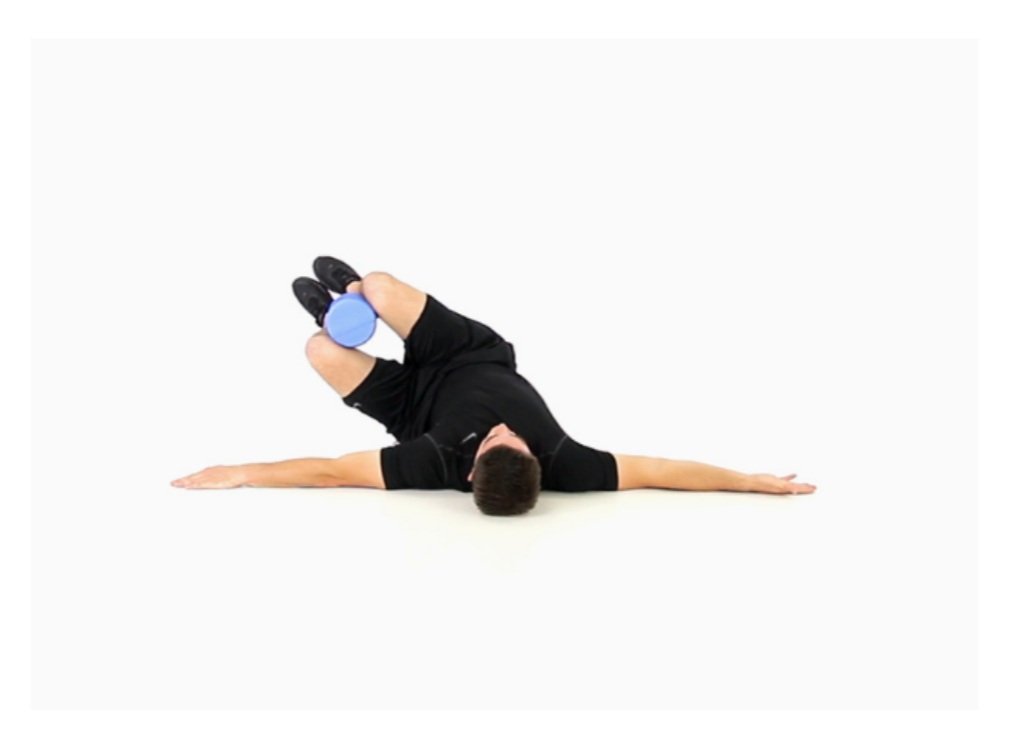Top 5 Sciatic Nerve Stretches to Beat Nerve Pain
Sciatic nerve pain is something we’ve all heard about, and it is in fact extremely common. Sciatic nerve pain affects approximately 10% to 40% of the population. Many people believe Sciatica is the name of a condition, however, it is a way to describe the symptoms that you are feeling. The cause of Sciatica occurs when a part of the sciatic nerve is pinched or irritated. The main causes for this are disc issues, joint issues, or muscular problems.
There are a few risk factors such as:
Age - age-related changes in the spine (herniated disc, bone spurs)
Obesity - Increases stress on the spine
Occupation - twisting you back constantly, carrying heavy loads, driving a motor vehicle for long durations
Prolonged sitting - sitting without moving
Diabetes - increased risk of nerve damage
Sciatic Nerve Anatomy
The sciatic nerve is the longest and thickest nerve in your body. The sciatic nerve starts just outside of the spine from the lower back (L4 to S3 spinal nerves) through the hips and buttocks to the back of the thigh and calf of each leg.
This nerve is also known as a mixed nerve, which means it contains both sensory fibers for touch and sensation as well as motor fibers for movement.
Signs and Symptoms
Sciatic nerve pain can be causes by various factors but is generally the result of muscles, joint or disc issues.
Sciatic nerve pain can present in many ways;
Mild achy pain down the back of the leg
Burning pain felt in the lower back or buttock region
Pain can be present as numbness in the back/glute and going down the leg
Tingling into the legs/feet
Severe debilitating pain that runs from your back, down your leg and into your feet
In very serious cases it may present as an electric shock
The general description of Sciatic pain is when one has pain that is radiating down the back of the thigh and it varies in intensity. Sciatic-like symptoms are usually felt only on one side of the body, however, in certain cases, they can be felt on both sides.
Sciatic pain is usually exacerbated by coughing, sneezing, and/or prolonged periods of sitting.
Treatment Options
Now that we’ve seen how Sciatica presents itself, it’s extremely important to point out that if treated most cases of sciatic-like symptoms can resolve. Below we will list out the types of treatment we can undertake to help get rid of the annoying pain!
Conservative Treatment
Conservative treatment of sciatica is the ideal way to help treat this condition. It encompasses varying techniques to help tackle this issue and get us back to our normal lives. The best way to treat a condition causing Sciatica is always to consult your healthcare professional.
Conservative treatment includes:
Rehabilitation/physio - This is the ideal way to help treat sciatica, by understanding what is causing the pain and then focusing on the right rehab and exercises for the core muscles and lower back to ensure good posture and alignment.
Maintaining a good sitting posture - utilize a chair with good lower back support, armrests and a swivel base. A Physiotherapist can assist with ergonomic sitting.
Correct use of the body - always consider ergonomic ways of working. When lifting up a heavy object, lift with your legs and not your back. Hold the load close to you and do not twist and lift at the same time. When standing for long periods of time, put one foot on a small box from time to time.
Medication - this is for pain that doesn’t improve with self-care measures. Medications may be anti-inflammatories, corticosteroids, antidepressants, anti-seizure medications or opioids.
Temperature therapy - Apply a cold pack to the painful area for up to 20 minutes. After 2 or 3 days, apply a hot pack to the painful area for 15 minutes.
Invasive Treatment
Invasive treatment is only considered when conservative treatment doesn’t work or if the tests such as the X-ray, MRI, CT scan, and Electromyography indicated that the condition is severe and none of the conservative treatments are going to work.
There are 2 common invasive treatments:
Steroid injections - this is when corticosteroid medication is inserted into the area around the nerve root that is causing pain. This technique is meant to reduce pain and can be administered up to 3 injections in 1 year.
Surgery - removing bone spurs or a portion of a herniated disk that is pressing on the nerve. This is only indicated when there is severe weakness, loss of bowel or bladder control, or if there is no improvement with other treatments.
Top 5 Sciatic Nerve Stretches & Exercises
As rehabilitation is the key way to treat this pain, exercise will be a key feature of getting better quicker. When exercising, it is important to keep 2 things in mind:
Performing exercises that increase sciatic nerve and hamstring length
Performing exercises to increase core strength and add stability to the spine
When you are experiencing sciatic nerve pain, all exercises may add to the pain but it should decrease once the exercise has been completed. If the sciatic nerve stretches are making your symptoms flare with no relief, it is important to contact your doctor or physiotherapist for guidance. Once again always consult your healthcare professional before beginning any exercises.
The top sciatic nerve stretches for sciatic nerve pain:
1. The Single Knee-To-Chest Stretch
This stretch focuses on the muscles of the lower back and hips. This relieves the pressure on the spinal nerves by creating gapping for the nerves exiting the lower spine.
To perform this stretch, you simply lay on your back, hold your knee and start to gently pull it towards your chest. Hold your leg there for 20 seconds, repeat 3 times, and try to perform this 2 times a day. If it feels less painful, you can bring both legs up to your chest.
2. Hamstring Stretch With a Towel
This stretch does 2 main things. Firstly it increases the flexibility of the hamstrings and also improves the range of motion of the hip. This result in performing daily tasks easier and helps reduce the strain of bending over.
To perform this stretch, you merely lay on your back, hook a towel or a strap under your foot, and while keeping your leg straight, draw up your leg until a stretch is felt along the backside of your leg. Hold your leg there for 30 seconds, repeat for 2 times and try to perform this 2 times a day.
3. Piriformis Stretch
A piriformis stretch is vital to decrease the symptoms along the sciatic nerve and it increases the range of motion.
While lying on your back, bend up one knee keeping the foot on the floor or mat. Bend the opposite leg and cross the ankle over the bent knee. Gently push inside of crossed leg at the knee. You should feel the stretch in the back of the buttock of the crossed leg.
Hold your leg there for 15 seconds, repeat for 3 times and try to perform this 2 times a day. Alternatively, you can do this stretch sitting on the side of the bed or on a sturdy chair.
4. Tick-tocks (lower trunk rotations)
When performing lower trunk rotations, you ultimately increase the flexibility of the lower back and hips which allows for better mobility and rotation in the spine.
Lying on your back with your knees bend and feet on the floor or mat, gently rotate your spine as you move your knee to the side and then reverse directions and move your knees to the other side. Hold your knees there for 1 second, repeat 20 times and try to perform this 1 time a day.
5. Sciatic nerve glide
Sciatic nerve glide, also known as, Nerve Flossing, is used to mobilize and stretch the nerve to reduce irritation and improve the range of motion in the hips.
Start by lying on your back and holding the back on one knee. Try to straighten the supporting knee and hold this position while you move your ankle up and down. Hold your foot there for 3 seconds, repeat 10 times, and try to perform this 2 times a day.
Book Now
Next Steps
Sciatica is a very common condition that can range from being mild to extremely debilitating. It is important to really understand what is causing the symptoms so we are able to adequately treat the pain and get back to feeling ourselves again. If diagnosed and treated correctly sciatica in a timely matter most of us will improve with care, so it is very important to consult your healthcare professional for the correct advice.
Rehabilitation and exercise work extremely well in treating this condition, so be sure to reach out to your physiotherapist or chiropractor to help get you back on your feet.
If you’re still dealing with sciatica, visit our sciatica and back pain expert, Dr. Chohan, to get on the fast track to recovery!













